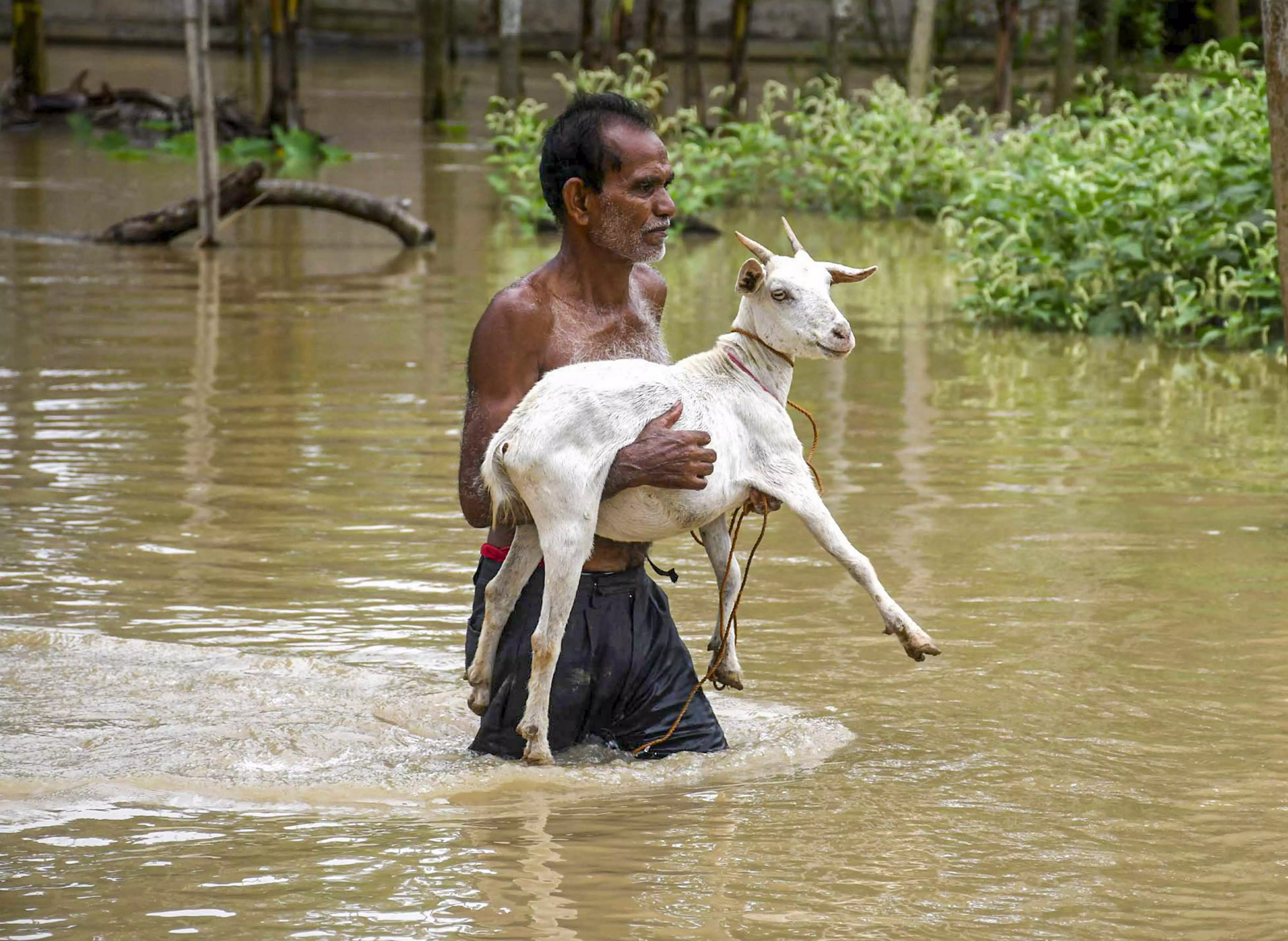Flood Fury Yet Again

Once again, the Northeast finds itself at the mercy of the monsoon’s unrelenting force. Over the past few days, relentless rainfall has led to widespread flooding across states like Tripura, Manipur, and Assam, disrupting thousands of lives, inundating urban centres, damaging homes, and straining state resources. The situation is not only a reminder of the region’s geographical vulnerability but also a wake-up call for more robust, coordinated, and long-term flood management strategies. In Tripura, nearly 1,300 families have been forced to abandon their homes, seeking refuge in government-run shelters across the West Tripura district. Agartala, the capital, remains waterlogged in many areas, with residents forced to wade through knee-deep water as civic authorities scramble to pump out stagnant water and prevent health hazards. With heavy rainfall expected to continue until June 5, and alerts for extremely heavy rain and gusty winds issued for several districts, the situation remains precarious. Despite the commendable efforts of the National Disaster Response Force (NDRF), State Disaster Response Force (SDRF), and local civil volunteers, the unpredictability and intensity of such weather events have overwhelmed urban infrastructure and flood-control systems. The scenes in Manipur are similarly distressing. Over 3,800 people have been directly impacted, and more than 880 homes have suffered flood or landslide-related damage. The situation escalated dramatically when rivers breached embankments, inundating areas in Imphal and Imphal East. The army and Assam Rifles have rescued nearly 800 people, and temporary shelters have been set up as a stopgap measure. But the rapid flooding has also highlighted the limitations of existing embankments and the lack of early flood warning systems in some of the most vulnerable regions. Water levels in rivers like the Iril have crossed danger marks, and landslides have disrupted daily life across 12 locations. Infrastructure, including key establishments such as medical institutes and communication centres, has been affected—raising concerns about the resilience of essential services in such emergencies. The impact on Assam, while not as dramatic in terms of displacement, cannot be underestimated. Guwahati, the state’s urban hub, has witnessed severe waterlogging in multiple localities. The repetitive nature of such incidents—almost an annual occurrence—should have led, by now, to stronger drainage and urban planning responses. Yet, even with increasing urbanisation and awareness of climate volatility, development projects continue without adequate flood-proofing measures or climate-resilient infrastructure. The result is predictable: paralysis of public life and enormous financial and emotional strain on residents.
While immediate rescue and relief operations remain the top priority—and these are being undertaken with admirable coordination—this year’s floods lay bare deeper, structural concerns. The Northeast, despite being among India’s most ecologically sensitive and flood-prone regions, often receives fragmented attention in terms of disaster preparedness. Flood management cannot be reactive; it must be anticipatory, well-funded, and guided by scientific planning. The dependence on embankments—many of which are decades old and poorly maintained—needs a strategic re-evaluation. Communities living along riverbanks deserve more than temporary evacuations. They need better housing, early-warning systems, and permanent relocation options if required. The monsoon is a known entity. Its arrival is no surprise. What is alarming, however, is how unprepared we continue to be, despite repeated warnings from meteorological agencies and environmental experts. Climate change is intensifying the scale and frequency of extreme weather events in the region. Sudden cloudbursts, prolonged rainfall, and overflowing rivers are becoming more common. Yet, state and municipal administrations continue to rely on short-term fixes—drainage pumps, sandbags, and temporary shelters—rather than investing in long-term resilience. Tripura and Manipur have done well to activate all available resources—from the army to municipal workers—but the burden must be shared more equitably across administrative levels. The central government must increase funding for climate resilience projects in the Northeast and ensure that disaster response frameworks are not just responsive, but also anticipatory. Urban planning needs a climate-sensitive overhaul, particularly in capital cities like Agartala, Imphal, and Guwahati, where repeated floods have become the norm rather than the exception.
Furthermore, there is an urgent need to involve local communities in resilience-building. Flood preparedness isn’t just about engineering interventions; it’s about social mobilisation. Training programs, school drills, local alert systems, and accessible communication networks can empower people to act quickly before disaster strikes. The role of local governance bodies, often overlooked, must be strengthened. Relief distribution, rehabilitation, and long-term rebuilding efforts work best when they are community-led and locally managed. A post-flood recovery plan must be comprehensive. It must address the immediate humanitarian needs—food, shelter, health—but also account for the socio-economic damage sustained by the poorest and most vulnerable communities. Floods devastate more than homes; they wipe out livelihoods, disrupt education, and strain mental health. Relief measures must therefore be designed to restore dignity and ensure long-term rehabilitation—not just survival. The recent flooding across the Northeast is not just a natural calamity. It is a test of administrative foresight, infrastructural readiness, and political will. While the rain may not be within our control, how we prepare for it—and how we protect our people from its fury—most certainly is.



